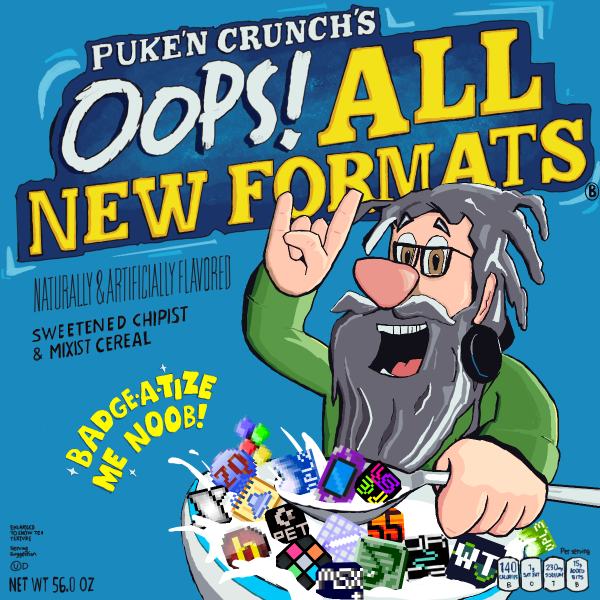All info came from Thomas Gruetzmacher @ '[l[http://tomaes.32x.de/text/faq.php[demo scene FAQ] via '[l[http://en.wikipedia.org/wiki/Demoscene[wiki] The demoscene is a computer art subculture that specializes in producing demos, which are non-interactive audio-visual presentations run real-time on a computer. The main goal of a demo is to show off programming, artistic, and musical skills. The demoscene first appeared during the 8-bit era on computers such as the '[[Commodore 64] and '[[zxbeep (format)[ZX Spectrum], and came to prominence during the rise of the 16/32-bit home computers (the '[[Atari ST (console)[Atari ST] and the '[[amigamod (format)[Amiga]). In the early years, demos had a strong connection with software cracking. When a cracked program was started, the cracker or their team would take credit with a graphical introduction called a "crack intro" (shortened cracktro). Later, the making of intros and standalone demos evolved into a new subculture independent of the software piracy scene. Prior to the popularity of IBM PC compatibles, most home computers of a given line had relatively little variance in their basic hardware, which made their capabilities practically identical. Therefore, the variations among demos created for one computer line were attributed to programming alone, rather than one computer having better hardware. This created a competitive environment in which demoscene groups would try to outperform each other in creating amazing effects, and often to demonstrate why they felt one machine was better than another (for example '[[Commodore 64] or Amiga versus Atari 800 or Atari ST). Demo writers went to great lengths to get every last ounce of performance out of their target machine. Where games and application writers were concerned with the stability and functionality of their software, the demo writer was typically interested in how many CPU cycles a routine would consume and, more generally, how best to squeeze great activity onto the screen. Writers went so far as to exploit known hardware errors to produce effects that the manufacturer of the computer had not intended. The perception that the demo scene was going to extremes and charting new territory added to its draw. Recent computer hardware advancements include faster processors, more memory, faster video graphics processors, and hardware 3D acceleration. With many of the past's challenges removed, the focus in making demos has moved from squeezing as much out of the computer as possible to making stylish, beautiful, well-designed real time artwork - a directional shift that many "old school demosceners" seem to disapprove of. This can be explained by the break introduced by the PC world, where the platform varies and most of the programming work that used to be hand-programmed is now done by the graphics-card. This gives demo-groups a lot more artistic freedom, but can frustrate some of the old-schoolers for lack of a programming challenge. The old tradition still lives on, though. Demo parties have competitions with varying limitations in program size or platform (different series are called compos). On a modern computer the executable size may be limited to 64 kB or 4 kB. Programs of limited size are usually called intros. In other compos the choice of platform is restricted; only old computers, like Commodore 64 or Atari ST, or mobile devices like handheld phones or PDAs are allowed. Such restrictions provide a challenge for coders, musicians and graphics artists and bring back the old motive of making a device do more than it was intended for. Normal people have normal hobbies, strange people have strange hobbies. ;) While some people enjoy to climb up to the top of the highest mountains, others may enjoy collecting stamps. And some find it interesting to live out their creative potential: Painting, making music, writing etc. Demosceners blend those activities with their interest for & usuage of computer technology. Secondly, people always like to communicate with like-minded people, who share their interests. Competition is fun and motivating, just like working together on a project.



